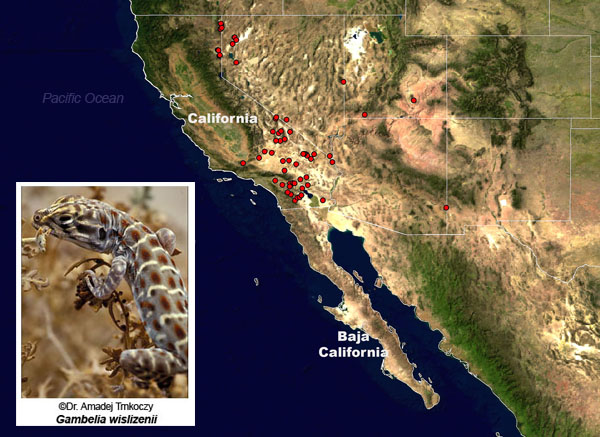Most natural history museums hold collections of biological specimens, gathered from decades of exploration, discovery, and description of the diversity of life. Like unique libraries of life, these collections represent the only verifiable record of Earth’s biodiversity. The California Academy of Sciences maintains one of the ten largest biodiversity collections in the world, a unique and invaluable resource which we are obligated to care for and use wisely.
Every specimen has associated information that describes the who, what, where and when: who collected it, what its scientific name is, where and when it was collected. By summing up all of the occurrences of a given species, its geographic range is identified.
Each dot here represents an actual specimen of the long-nosed leopard lizard Gambelia wislizenii, collected in the field and identified by an expert, now residing in the Academy’s biological collections as part of the verifiable record of Earth’s biodiversity. This does not represent the entire geographic range of this species. However, it is through this process of expert identification combined with accurate geographic occurrences that species distributions are defined.
|
 |

